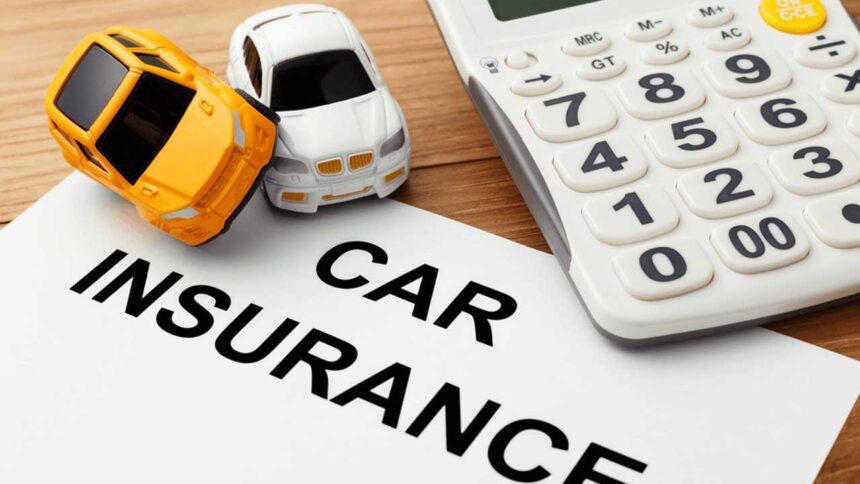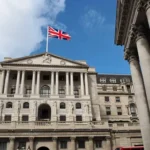Car insurance premiums in the UAE are entering a period of sharp escalation, as heavily affected by the spillover effects of Trump-era tariffs. With global car supply chains being disrupted, car insurance premiums now stand to rise on account of escalating repair costs, heightened claims, and supply delays. While UAE car prices appear stable in the short term, insurers are quietly re-pricing rates to reflect a more expensive claims environment that is being reshaped by tariff tensions.
Read More: UAE Air Industry Soars with Etihad’s $14.5B Boeing Deal
Tariffs Trigger Increased Car Insurance Premiums in UAE
At the center of it all are Trump’s newly resurrected tariffs, which feature an eye-watering 25% tariff on fully assembled vehicles and auto parts that are imported into the United States. This has created a domino effect along supply chains worldwide—including those related to the UAE. Even though a majority of vehicles in the Emirates are not American-made, a large percentage of components, parts, and systems come from or transit through American or tariff-impacted logistics centers. This connectivity is driving up expenses globally, and car insurance rates in the UAE are in the crossfire.
Insurers count on reliable parts availability and repair cycles in determining car insurance premiums. But with wait times going weeks beyond normal and parts prices going up across the board, underwriting models are struggling. That’s translating into car insurance premium increases to cover expected future losses. Consequently, drivers—even those with perfect records—can anticipate higher premiums at renewal.
The Global Auto Supply Chain Crisis and Its Domino Effect
The global automobile sector is not one that exists in a vacuum. All the Japanese, Korean, and European automakers share intricate, multi-country supply chains. With the Trump tariffs upsetting these chains, even non-American vehicles in the UAE are suffering delayed services and higher repair costs. Insurers are reacting by raising car insurance premiums on several layers of coverage, including comprehensive and third-party coverage.
A UAE insurance expert describes, “Each week of delay in repairs translates into more expense in rental vehicle claims, labor, and logistics. These added costs hit our bottom lines—and ultimately, the customer’s premium.” So, without a noticeable hike in car prices, the cost of ownership is creeping up quietly through the back door—through your car insurance premiums.
Moreover, some cars can be labeled as “high-cost to insure” because they rely on particular components, particularly US-made electronics or safety features. In this instance, car insurance costs could increase disproportionately, even if the car is fairly new or in good condition.
Weather Events and the Rise of Claims Inflation
As if it wasn’t bad enough with global tariff wars, the UAE has also been hit hard by climate-related incidents. Extreme flooding and abnormal weather have resulted in a 40% hike in car insurance premiums for certain policyholders. Trump tariffs are also exacerbating this delicate situation by piling on another expense—particularly on imported parts used for repairs due to weather damage.
Additionally, the abolition of post-COVID discounts by most insurers, combined with an increased number of registered cars, particularly in Dubai, is also affecting premium increases. An 8.7% year-on-year rise in vehicle registrations has ensured a more competitive insurance market—compelling insurers to disperse their risks over a bigger base but with reduced margins. Car insurance premiums are the direct victim of this new reality.
For reckless drivers, it is worse. Insurers are also hardening their risk profiles, and they may increase premiums for such drivers by 10–15%, or even restrict them to basic third-party cover. Loss control is now the focus, and this has resulted in tougher policies and higher car insurance prices overall.
Also Read: 30% Tariff Rate Impacting Global Trade Amid Prolonged
Oil Prices Down, But Insurance Costs Up
In a cruel irony, declining oil prices—on account of optimism over a US-Iran nuclear accord—could bring relief at the fuel station, but won’t benefit your overall vehicle costs. Premiums for car insurance are going to climb substantially enough to counter whatever modest gains UAE motorists will reap at the petrol pump.
Actually, the Trump tariffs will help drive up the price of US-branded or US-part-dependent cars like Lexus, Mercedes, and BMW by 10–15% in the long term. Such cost increases will likely induce more UAE customers to buy cars earlier than they would otherwise have done, expecting higher future inflation. But this clamor is likely to worsen existing bottlenecks in supplies, making it even more difficult to forecast costs for insurers. This provides a feedback loop—increased claims expenses result in increased car insurance premiums, which then feed back into price-sensitive buying habits.
UAE Drivers: What to Do Now
With increasingly rising car insurance premiums, it’s more crucial than ever to be intelligent when it comes to insurance.
Shop around for quotes from several insurers when renewing your policy. Think about raising your deductible to lower your monthly premium cost. Maintain a clean driving record to prevent unnecessary surcharges. Be aware of worldwide trends like Trump tariffs and how they could affect your next car and insurance payments. Plan Ahead Before It Hits Your Wallet
The increase in automobile insurance rates is no longer a prediction—it’s occurring. Trump tariffs are only part of the equation, but their effect is tangible and expanding. For UAE drivers, understanding and careful planning can assist in coping with the economic pain of increased insurance expenses in an ever-evolving international marketplace.
For More Trending Business News, Follow Us 10xtimes News






